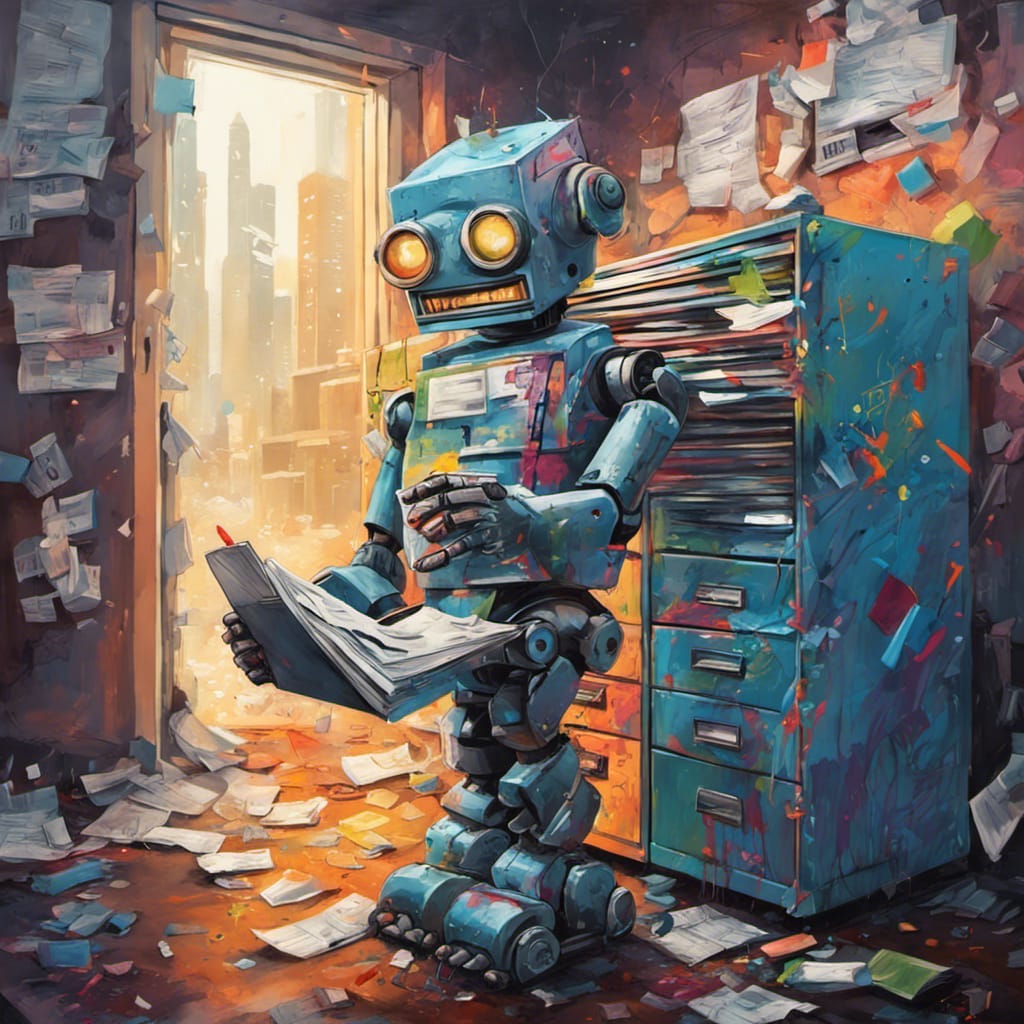Harnessing the Power of AI in the Workplace
How & why to use AI to scale practices & processes, not content
Recently, I’ve been doing a lot of work helping businesses to explore how to integrate AI to improve the efficiency and effectiveness of their organisations, especially their HR and L&D teams.
Fear of AI hallucinations along with concerns for data privacy means that most business leaders in start with the assumption that the power and potential of AI lies in building bespoke LLMs - i.e. building an internal search + retrieve engine based on internal data using a chat interface.*
Often leaders have already embarked on a journey of ingesting thousands of pieces of content and building chatbot interfaces that can answer questions about their typically vast corpus of content.
This strategy might go some way to circumnavigate a crisis of trust in Open AI and some way to solving L&D’s age-old “too-much-content” problem, but it fails to leverage the real power of AI.
Using AI to create a “bespoke ChatGPT” is like using a Mac Book as a paperweight: it does the job, but it fails to harness the real business potential of AI - to augment the workforce and transform business outcomes.
The companies which figure this out quickest will be the ones which win. Here’s what it looks like in practice.
*Footnote: three days ago, OpenAI released ChatGPT Enterprise, which delivers enterprise-grade security & privacy for the use of AI in the workplace.
Use AI to Scale Practice & Process, Not Content
Leveraging the true, transformative power of AI in corporate organisations means using AI as a tool to scale and deepen organisational expertise, not organisational content.
Here are three analogies I often use with business leaders to help reframe their thinking on AI:
Chef vs. Recipe Book: Poor quality ingredients or a recipe book with inaccurate instructions can lead to poor dishes. BUT, a well trained chef with a deep understanding of cooking techniques can spot and compensate for mediocre recipes and ingredients.
Musician vs. Sheet Music: Quality sheet music is important because sheet music with errors can lead to poor performances. BUT, a well trained musician with a strong grasp of music can detect and correct mistakes on the fly.
Driver vs. Maps: A map with incorrect routes or outdated information can lead to wrong turns and longer travel times. BUT, an experienced driver trained in navigation skills can find their way, even with a flawed map.
For business leaders, my two key pieces of advice are:
Don’t… Fall into the trap of data dumping: Merely feeding AI with vast amounts of data without a clear strategy is akin to expecting someone to become an expert by merely reading a library of books. Quantity doesn't equate to quality.
Do… Focus on processes & practices: Leverage the power of humans + AI to identify, scale and enhance your organisation's most effective methods and practices. This means understanding what works best in your organisation and using AI to replicate and amplify those successes.
Here are a few examples of what this could look like in practice:
L&D: By analysing training, pedagogical & performance data, AI can identify the instructional design & delivery strategies which prove most effective in increasing organisational knowledge & improving performance. AI can be used to guide L&D teams in real-time, suggesting responses or actions that align with proven best practices and ensuring consistency of impact.
Operations: If certain operational workflows have proven to be the most efficient in specific departments, AI can be used to monitor workflows in real-time, suggesting adjustments or automations to align with these best practices.
Sales: If a company identifies that certain sales techniques or approaches have a higher success rate, AI can analyze these methods in detail. It can then train junior salespeople through simulations or provide real-time suggestions during customer interactions, ensuring that the entire sales team adopts these best practices.
Supply Chain Management: If certain procurement strategies or vendor relationships have consistently yielded cost savings and efficiency, AI can analyse the patterns and automate procurement decisions based on these successful strategies, ensuring consistency across the organisation.
Customer Support: By analysing the most successful customer support interactions that lead to high customer satisfaction, AI can guide customer support representatives in real-time, suggesting responses or actions that align with proven best practices.
In all of these examples, the underlying principle is the same: AI is used to scale methods and practices, not access to content.
In the rapidly evolving landscape of corporate innovation, AI stands out as a beacon of potential. However, like any tool, its value is determined by how it's used.
Closing Thoughts
AI is more than just another tool for ingesting and searching content; if harnessed correctly, it has the potential to revolutionise the business world. It can streamline operations, personalise customer experiences, and offer insights that were previously hidden in vast pools of data.
The future of AI is potentially one where decision-making is sharper, operations are smoother, and innovation is constant. It's a world where companies are more responsive, more agile, and more attuned to both their employees' and customers' needs.
But like all tools, the impact of AI will be determined by the skill and vision with which it's used. By understanding its potential and approaching its integration thoughtfully, business have the opportunity to use AI to unlock unprecedented levels of innovation, efficiency and effectiveness.
The companies which figure this out quickest will be the ones which win.
Phil 👋
PS: Want to get hands-on and learn more about how to integrate AI into your L&D strategy, with support from me? Join me and a cohort of people like you on the AI Powered Learning Science Bootcamp, a three week, high-support experience to hone your AI knowledge & skills.
Applications for the September & October cohorts are open NOW!


